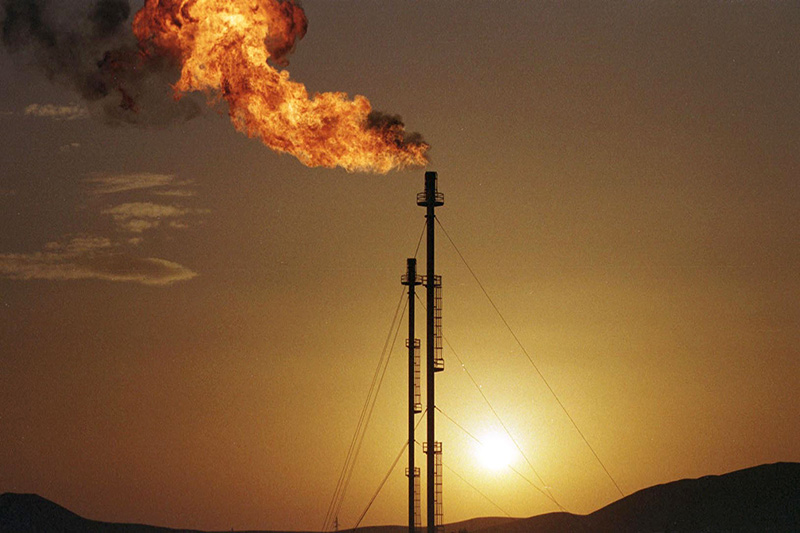Investing.com - Natural gas futures ended Friday’s session up nearly 3%, after a report from the U.S. Energy Information Administration showed natural gas supplies fell more-than-expected last week.
Meanwhile, market players continued to focus on shifting weather forecasts for the next few weeks to gauge the strength of U.S. heating demand.
Natural gas prices have closely tracked weather forecasts in recent weeks, as traders try to gauge the impact of shifting forecasts on winter heating demand.
On the New York Mercantile Exchange, natural gas futures for delivery in February jumped 2.85% Friday to settle at USD3.289 per million British thermal units by close of trade.
Despite Friday’s strong gain, natural gas prices fell 5.1% during the holiday-shortened week. Markets were closed on Tuesday, New Year's Day.
The U.S. Energy Information Administration said Friday that natural gas storage in the U.S. in the week ended December 28 fell by 135 billion cubic feet, compared to expectations for a decline of 127 billion cubic feet.
Inventories fell by 77 billion cubic feet in the same week a year earlier, while the five-year average change for the week is a decline of 111 billion cubic feet.
Total U.S. natural gas storage stood at 3.517 trillion cubic feet as of last week, 0.7% higher than last year’s level and 12.4% above the five-year average for this time of year.
The Energy Department released its weekly report one day later than usual because of New Year’s Day holiday.
Early withdrawal estimates for next week’s storage data range from 155 billion cubic feet to 176 billion cubic feet.
Inventories fell by 137 billion cubic feet in the same week a year earlier, while the five-year average change for the week is a decline of 165 billion cubic feet.
Natural gas prices plunged to the lowest level since late-September on Thursday, as forecasts showing mild weather across most parts of the U.S. in the first two weeks of January weighed on sentiment.
The latest National Weather Service six-to-10-day forecast issued on Thursday again called for above-normal temperatures for the eastern half of the U.S.
Bearish speculators are betting on the above-average weather reducing winter demand for the heating fuel. The heating season from November through March is the peak demand period for U.S. gas consumption.
The heating fuel has lost nearly 18% since touching a 14-month high of USD4.001 per million British thermal units on November 26, on speculation that temperatures won’t be cold enough to erase a surplus of the fuel in storage.
Elsewhere in the energy complex, light sweet crude oil futures for February delivery settled at USD93.08 a barrel by close of trade on Friday, adding 2.5% on the week.
Meanwhile, heating oil for February delivery dipped 0.15% over the week to settle at USD3.020 per gallon by close of trade Friday.
Meanwhile, market players continued to focus on shifting weather forecasts for the next few weeks to gauge the strength of U.S. heating demand.
Natural gas prices have closely tracked weather forecasts in recent weeks, as traders try to gauge the impact of shifting forecasts on winter heating demand.
On the New York Mercantile Exchange, natural gas futures for delivery in February jumped 2.85% Friday to settle at USD3.289 per million British thermal units by close of trade.
Despite Friday’s strong gain, natural gas prices fell 5.1% during the holiday-shortened week. Markets were closed on Tuesday, New Year's Day.
The U.S. Energy Information Administration said Friday that natural gas storage in the U.S. in the week ended December 28 fell by 135 billion cubic feet, compared to expectations for a decline of 127 billion cubic feet.
Inventories fell by 77 billion cubic feet in the same week a year earlier, while the five-year average change for the week is a decline of 111 billion cubic feet.
Total U.S. natural gas storage stood at 3.517 trillion cubic feet as of last week, 0.7% higher than last year’s level and 12.4% above the five-year average for this time of year.
The Energy Department released its weekly report one day later than usual because of New Year’s Day holiday.
Early withdrawal estimates for next week’s storage data range from 155 billion cubic feet to 176 billion cubic feet.
Inventories fell by 137 billion cubic feet in the same week a year earlier, while the five-year average change for the week is a decline of 165 billion cubic feet.
Natural gas prices plunged to the lowest level since late-September on Thursday, as forecasts showing mild weather across most parts of the U.S. in the first two weeks of January weighed on sentiment.
The latest National Weather Service six-to-10-day forecast issued on Thursday again called for above-normal temperatures for the eastern half of the U.S.
Bearish speculators are betting on the above-average weather reducing winter demand for the heating fuel. The heating season from November through March is the peak demand period for U.S. gas consumption.
The heating fuel has lost nearly 18% since touching a 14-month high of USD4.001 per million British thermal units on November 26, on speculation that temperatures won’t be cold enough to erase a surplus of the fuel in storage.
Elsewhere in the energy complex, light sweet crude oil futures for February delivery settled at USD93.08 a barrel by close of trade on Friday, adding 2.5% on the week.
Meanwhile, heating oil for February delivery dipped 0.15% over the week to settle at USD3.020 per gallon by close of trade Friday.
